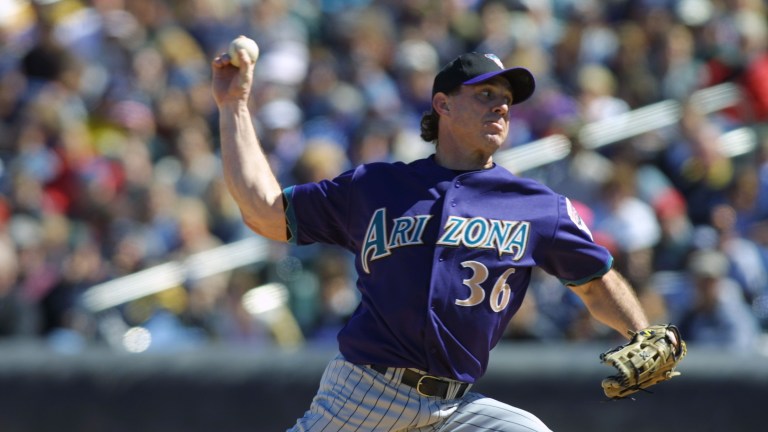MLB Journeymen: Mike Morgan
A career that began at 18 years old and ended at 42, Mike Morgan found himself on a dozen different teams across his big league career.

Throughout the rest of the offseason, we’ll look at some of baseball’s well-traveled, some of who have changed franchises more often than others. Our next featured player held the mark for most teams while defining the journeyman term so much he was nicknamed “The Nomad.”
Those cliches that characterize patience — “better late than never” and “good things come to those who wait” — were releveant. Pitching for a record 12th major league team in his 24th major league season, Mike Morgan had finally reached the World Series as a member of the 2001 Arizona Diamondbacks.
He entered three times out of the bullpen. Three appearances, 4.2 innings, no runs allowed. Each October outing has a certain pressure, but Game 5 at Yankee Stadium had more than the norm. Pitching in the 9th, 10th, and 11th, Morgan kept the game and the series tied. New York won that night, but Arizona took the title in a dramatic seventh game.
Morgan ended his career after the next season around his 43rd birthday — and started it soon after graduating high school. Oakland A’s owner Charlie Finley drafted the 18-year-old and sought to bring him immediately to the majors. The A’s, a dominant force early in the decade, were far removed from those glory days. Finley had dismantled the club and was grasping at ways to draw fans who had abandoned the Coliseum.
Proving timing is everything, and not always in a good way, Morgan was thrust into an impossible situation. He was a very raw pitcher on a very bad team.
”I should’ve been in rookie ball,” he later told the New York Times.
As expected, the experiment went terribly. After three starts in ’78 and 13 more in ’79, Morgan was mercifully sent to the minors. As he moved on from team to team during the 1980s, Morgan possessed the talent but never had the surroundings the build upon it.
The 1982 Yankees declined after reaching the World Series. The 1983 Blue Jays were a couple years away from contention. The Mariners of the mid-80s were baseball’s version of the wilderness. And the 1988 Orioles had one of the worst records in recent times.
During that 10-year stretch, Morgan was losing far more often than he was winning. With an ERA near 5.00, he went to the Los Angeles Dodgers — coming off a championship year with a long legacy of successful pitching development.
Coach Ron Perranoski adjusted his mound position which would help Morgan make better use on the movement of his fastball. As Morgan stated to the New York Times: ”finally, I began to see with my own two eyes what everybody had been telling me.”
Although Morgan had a losing record in 1989, he had turned a corner. His ERA that year was 2.53 and his WHIP was 1.068. The next season, he led the NL with four shutouts. In 1991, at age 31, he made his first All-Star team on his way to a 14-10 mark.
Morgan moved to the Chicago Cubs but maintained the success in 1992, establishing a career-high 142 ERA+. But three trips to the disabled list later during his Cubs stint took a toll on his durability and his status as a big-league starter. By the middle of the 1990s, he embarked on a journey around the midwest — from Chicago to St. Louis, from St. Louis to Cincinnati, from Cincinnati to Minnesota, before landing back on the North Side for a brief stint in Cubs blue (which included surrendering Mark McGwire’s 61st home run in 1998).
He got one more opportunity as a starter in Texas, but the 1999 season ended with him allowing 25 homers thanks to many hitter-friendly conditions of that time. His ERA was 6.24 and he was approaching 40.
Morgan made it to Arizona in 2000 — not to retire but to serve the Diamondbacks mainly as a relief pitcher. It ensured he was one of 29 major leaguers to play in four different decades. And by the measurement of ultimate team results, the final stop for Vagabond Mike was clearly the most rewarding.
